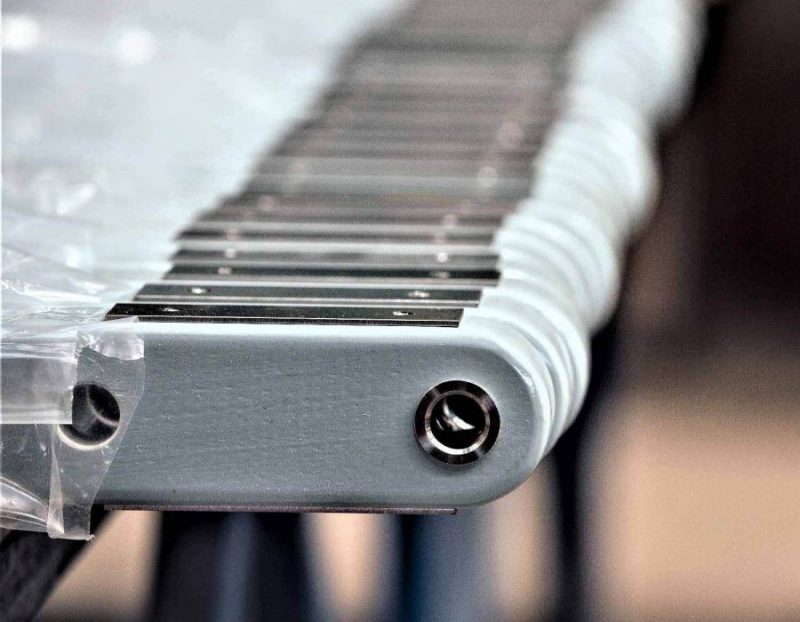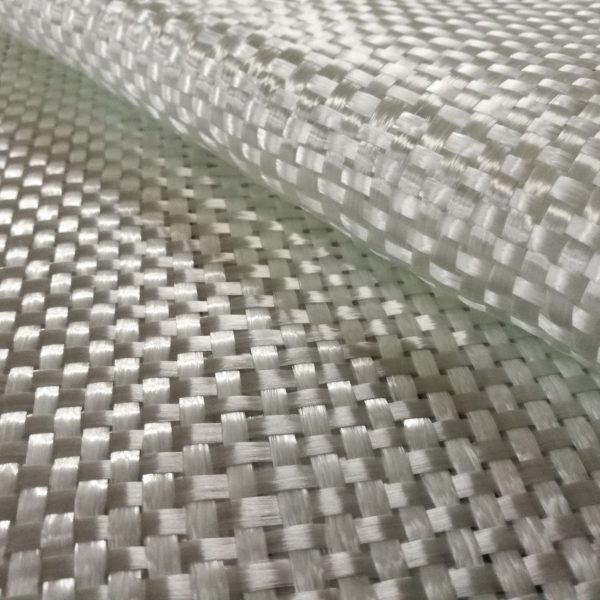By Definition…
A composite material is the permanent combination of at least two contributory materials, often with different or competing physical or chemical qualities. A composite combines these materials to form a more superior material with improved properties.

Composites used for Permali’s Naval Stanchions
Importantly, a composite doesn’t forfeit its original identity, but carries through its useful characteristics into the new compositional material. Where traditional materials have a defined purpose, composites can introduce new properties, such as strength, durability, reduced density, or resistance to moisture, electricity or corrosion.
Typically, the resulting composites are improved, or performance tailored versions of their constituent materials, designed to better suit their end application.
A Short History of Composite Materials
Learning from the past, composite materials have a long history of helping civilisations transform the ways they work and the outcomes of their labour. Early artisans, engineers, and ancient builders alike throughout human history have embraced composites for smarter, more efficient applications.
Ancient Contexts
The earliest recorded use of composites came from the Mesopotamians in 3400 B.C. Through a small, though significant, feat of engineering, they glued thin veneers in layers to form plywood. As a brilliant example of early construction techniques improved through composites, this era was ripe for developments in the way settlements and dwellings were built.
Throughout the 12th century, Mongol warriors succeeded in crafting swifter, more precise weaponry, specifically archery, in order to defeat their enemies. A clever craft of bamboo, pine resin silk and a few other materials meant that the Mongolians were able to fortify their instruments to heighten performance and precision.
The Industrial Revolution
Not limited to construction or instrument design, later societies experimented with composites throughout the 1800s (including a particularly curious episode with canoes). During the late 1800s, synthetic resins were introduced on the market through a chemical process referred to as “polymerisation”.
Modern Society
At the dawn of the 1900s, a chemist by the name of Hendrik Baekeland modernised composites through Bakelite, an early synthetic resin that found commercial use in gearshifts for Rolls-Royce. It wasn’t until the 1930s, however, that composites heralded substantial shifts. A series of breakthroughs defined the era: Owens Corning, an early engineer, helmed a process of commercially producing fiberglass, not long after launching the FRP (Fibre Reinforced Polymers) industry. This helped transition construction and other areas alike away from an era of plastics.

FRP Fibreglass
Throughout the later 1930s and early 1960s, experiments with composites pushed the boundaries for change within manufacturing and construction, introducing cheaper and higher performing materials and processes. Formerly experimental, composites were accelerated into commercial settings by World War II.
Not long after, there was a popular and widespread demand for composites, which grew rapidly into an industry, touching on the likes of transport and infrastructure. Ever evolving, the composite industry, long after the Space Age of the 1970s, was launched into constant growth, advancing on its own limits.
What are Composite Materials Used For?
Often a composite material will be created as a solution to improve the performance, functionality, or design of something. The applications of composites are wide-reaching and varied, and have been incorporated across a multitude of markets.
Composite materials, in a variety of industry-wide applications, are often bespoke in how they adapt for heightened properties of protection, performance or precision.
- Composite materials for performance:
With customisable properties, the engineering of materials will often focus on how performance can be boosted, heightened or refined. The kind of sought-after properties range from agility to lighter weight, softer materials to tougher, more strengthened resistance to unpredictable environments. For example, military aircraft, especially for transport, are often subject to tough conditions. As such, they can be fortified with ballistic solutions for an added skin of armour. Cargo Lining is also a popular application of FRP Composites used in both civil and military aircraft to protect the cargo bay from damage as a result of daily loading as well as fire and smoke.

Cargo Liner made from Permali’s Permaglass® FRP sheet material
- Composite materials for precision:
One of the great benefits of composite materials is how they can answer to evolving regulations. For example, aircraft are designed with custom barrier fabrics and textiles that must satisfy tough FAA safety regulation.
What are the Advantages of Composites?
Wide-ranging and varied, the beneficial properties of composites can include anything from performance modification, such as changes in the weight of materials, to the strengths and durability of a product. Typically, a composite will be customised to its application – and this will explain the benefits of a composite material.
There are many advantages to using composites, including:
- Design-modifiers: improved, high performing designs.
- Various tolerances: can be toughened against harsh conditions.
- Weight changes: more agile, lighter weight construction.
- Resistance training: ward off hurtful factors that weather materials such as water, moisture, or corrosion.
- Strength: similar to resistance, composites can be customised to fortify products against harsh, tough environments.
- Cost reductions: not all materials are created the same, and composites are mindful of their job more than commonplace materials like steel.
Properties of composite materials
The properties of a chosen composite will vary depending on the job it’s designed for. It could, for example, be a material reinforced to offer better strength, toughness, or resilience. Another popular example is weight reduction.
Other common properties include:
- Fire or water resistance
- Chemical resistance
- Flexibility
- Translucency
- Electric insulation
Why Use Composite Materials?
Conventional materials have their limitations, whereas composites can focus on heightening, often superior properties to offer a bespoke solution. The goal of lighter weight, added resilience, or precision is often an attraction to many industries wanting to improve their products or processes.
A continued innovation in composites is vital to the elevation of other industries that thrive on refining how they operate. Not merely is the world a changing force, but the complexity of legislation and compliance is a challenge that composites can meaningfully address – sustainability, ethics and a changing social and cultural attitude is a pressure that shapes the materials we use.
Types of Composite Materials
Many composites inherit their new properties from a tactful and precise bonding process that teases out a greater result. For example, many composites are preceded by reinforcements, which testifies to a process of strengthening materials. These have taken common materials and engineered a stronger, more resilient sibling material.
Nowadays, common composites are abundant, if sometimes invisible, within our built settings. Reinforced plastics, woods, and metals – these processes have advanced traditional materials for better, easier, and sometimes cheaper application. Fibreglass, as an everyday composite, is the result from a careful, deliberate bonding of glass fibre with fibre-reinforced plastics. It benefits from being cheaper and with greater flexibility. Plywood, familiar with construction tasks, is another example of a reinforced material. Engineered from thin piles of wood, plywood is known for its greater strength and compositional stability.
Yet, custom solutions provide answers to more strenuous, and commercial, uses of composite materials. These are often more technically aware, such as designing materials for precise environments or applying composites to the high pressured, unpredictable circumstances of the sea and air as well as for land use.
An expert blend of technologists, engineers, and processing specialists, Permali’s standard and bespoke prepreg grades are targeted at markets using local resin formulations. In consulting the design of materials for markets, for example, Permali’s prepregs are printed on sheets, either as a roll or determined by size.
Certain composites are more commonly engineered, depending on the demand and urgency of their application into the modern, material world. Designed to remedy weaknesses in our built environment, these composites are everyday examples of how materials evolve to answer to challenges in various industries and settings.
- Composite woods like plywood are created from multi-layered wood strips glued together at angles.
- Fibreglass and fibre-reinforced polymer are examples of reinforced plastics in common, everyday use that serve a greater strength and elasticity.
- Reinforced concrete is the result of fortifying concrete with a higher strength material like steel.
- Improved ceramic materials can be engineered, known as ceramic matrix composites. This assumes additional properties of thermal shock absorption and are fracture resistant.
Examples of Composite Applications
Custom composites are tailored to specific applications or tasks that require vital properties of strength, resilience, insulation, and many more. It takes an expert hand to apply the right knowledge and expertise to get the job done.
Practical examples include, but are not limited to:
- Reinforced, safety-first materials in power plants and other energy sources.
- Technical fabrics for consumer use in mobile dwellings.
- Anti-ballistic solutions for sea, air, and ground military vehicles.
How to Choose the Right Composite Material
Composites can offer bespoke solutions for material choices that might serve to enhance the performance, precision, or protection of a product.
It’s important to understand the various goals and desires of your materials – are you, for example, looking for a stronger alternative to traditional materials? The suitability of its role is going to guide the kinds of composites you might need, which is where a custom process can be the best direction forward. There is a variety of applications that can inform the suitability of composites.
Lastly, the economics of materials is another area to consider. More often, composites are cost-effective alternatives to traditional materials, which may not be as sustainable.
Trusted Material Solutions from the Experts
With an 80+ year history of delivering efficient and practical material solutions, Permali has an industry-leading presence across industries such as Automotive, Medical, Textile, Construction and beyond. Offering custom composites, we’re experts in extracting and refining the superior qualities from the materials we use.
For more information, contact sales@permali.co.uk

